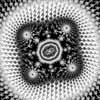Leaderboard
Popular Content
Showing content with the highest reputation on 09/07/20 in all areas
-
Sure. There are 22 different numbers on the sheet (ignore the arrows). So there is only one that begins with a zero - 0.668 near the top right. Further down on the right there are three numbers that begin with a 4, one above the other. 447 ; 423298 ; 487643 and so on for the rest. Moths table has two columns. The left hand table lists the digits 0 through 9, though why he has put 0 at the end I don't know. The right hand column shows the number of occurences of these digits in the 22 numbers on the sheet. It is called a frequency table and the numbers in the right hand column are the frequencies of occurence of each specific digit.2 points
-
Yeah, thousands, hundreds tens, units fractions, and so on. I don't see it as off topic though.1 point
-
If the digits were truly chosen at random, with a sample size of 22 I would expect pretty well all the numbers between 0 and 9 to appear twice. Spikey is a good word for it because there would be some 3s and some ones, But it would not cluster round a centre number like this data set. As a matter of comparison. When folks are asked to choose a number between 1 and 10, by far the most popular choice is 7. (Wikipedia) So a bell curve would indicate something like that going on. Another indicator is the frequency of entries in each decade ( I haven't checked this) A sample size of 22 is getting towards usual control sample sizes (30 is the British Standard for concrete cubes and other 'cusum' quality control charts ) for the normal distribution. But I'm beginning to sound like the weather man on TV with loads of useless facts and figures.1 point
-
Maybe your source is saying black holes kill time? There is another thread here about Newcomb's law which would suggest these numbers are "made up". Here is my count. Sure looks like a Bell curve. first digit, count 1, 1 2, 1 3, 1 4, 3 5, 3 6, 5 7, 3 8, 2 9, 2 0, 11 point
-
I have not been to find an answer to why a traveling repeats indefinitely and why the quantity remain finite. For the purposes of this explanation is it enough that I I simply accept this as the definition of a traveling wave? This is what I have used to try and get a better understanding of waves (I have not yet completed the unit): https://www.khanacademy.org/science/physics/mechanical-waves-and-sound It does illuminate things a bit for me, because I did not find it surprising that an instrument could react this way. It is interesting that this can be used practically. However you are correct that my question was assuming that instrument was working correctly. It is understandable that my question was not entirely clear since I was confused. Yes my question was not about the double slit experiment although Brain in the video does say that waves can be combined as in the double slit experiment. So a comparison may be drawn (?), but to be specific I was struggling with the example of what I mistakenly thought was describing the measurement two separate electrons in central park (minutes 28 - 30 into the video). I am so sorry and embarrassed! But it is one electron in the example, not two, my bad. I still would like to learn what happens when the waves combine, if some of you have not lost patience with me already! I did not find it intrusive, and would like to continue wherever it is that you may be going with the lesson. I have personally found everyone's input to be helpful.1 point
-
Do you realize that you can use Python Debugger and figure out by yourself the all answers to questions about your Python scripts which you are starting on this forum? Enter "Python online debugger" in net search engine, copy'n'paste Python script in it, and observe how variables are changing with each "step into" and "step over", line by line.. e.g. https://www.onlinegdb.com/online_python_debugger It will be simply faster for you, as you won't have to wait till somebody answered your question here.. Somebody please guide me. [ .... ] initializes array print( [ ] ); is just printing newly dynamically created array.. It is not much different from using print([1,2,3]); If you want to do it without generating new array, you can write: print(fun_list2[0](10)) print(fun_list2[1](10)) print(fun_list2[2](10)) print(fun_list2[3](10)) print(fun_list2[4](10)) or you can make for loop like: for i in range(5): print(fun_list2[i](10)) or even better: for f in fun_list2: print(f(10))1 point
-
https://www.fallacyfiles.org/redefine.html https://www.logicallyfallacious.com/logicalfallacies/Definist-Fallacy 1. Define "heaven" to be something that's "scientifically supported." (Or maybe something simply vague enough that it can't be scientifically refuted?, ie. "not even wrong"?) 2. Therefore, heaven is scientifically supported. QED. 1. Define something as whatever I want to argue. 2. Therefore, whatever I want to argue.1 point
-
I think you have a different definition of "scientifically supported". I see conjecture and vagueness and hand-waving with emphasis. Lots of belief and guesswork but none of it trustworthy. I recommend you stick to a more rigorous method of identifying where the general concept of an "afterlife" can be meaningfully supported before getting us on board with your version of it. Why do you think the concept of Heaven and Hell need to be scientifically supported? Aren't they, by definition, unobservable and therefore outside of measurement by natural means (IOW, supernatural)?1 point
-
It's not enough to just "see" the events simultaneously to say that they were simultaneous, even if you are halfway between the events when you saw them. For the observer to claim that those events were simultaneous, he also would have to have be either stationary with respect to these events or the relative motion between himself and those events would have to be on a line perpendicular to the line joining the events. Another observer moving parallel to that joining line, even if he was at the exact same point as the first observer, and "saw" the events simultaneously, just like the first observer did, would conclude that the events themselves were not simultaneous. So for example, this shows events according to the observer at rest with respect to the events. The white expanding circles is the light produced by the events For him, the events occur simultaneously. Both light flashes and the railway car observer arrive at his position at the same time. However, for the railway observer, the order for the same events is different: The light from both flashes meet at his position at the same moment as he is adjacent to the track observer, but the events producing those flashes did not occur at the same time. This is because he must measure light as traveling at c relative to himself. In other words if he were to measure the speed of either light flash as it passed him, he would measure both as moving a at relative to himself. Thus for him, the light flashes, once emitted, expand outward from the point of emission at c. (the red dots move away from these points, but we don't care what they do after the flashes are emitted) Now for him, the time it takes for a flash to reach him from either event is equal to the distance between him and the event at the moment the event took place divided by c Since the events have to occur prior to his seeing the light flashes, they had to occur before he was at the halfway point between them. He had to be closer to one event than he was the other. Different distances means different travel times at c, and therefore when he sees both flashes at the same time, he also knows that one of those flashes had to travel a longer distance and take a longer time to reach him, and ergo, the events producing those flashes could not have occurred simultaneously.1 point
-
Hey all, I have randomly discovered this thread on the net and here I am, making a new accound. So yeah, I can do the same thing as everyone else described. But I can do even more, I can sort of heal other people. Only tryed with head aches and somach crams so far, but it seems to be working every time. What I do exactely is start the 'feeling' in diaphragm, than move it to my right hand and then hover the palm over the affected area thinking intensely that I want to 'change the water' in the other person so that whatever causes the pain is neutralized. After 2-3 minutes I get an WOW from the subject that say the pain is completely gone. Here are my thoughts before stumbling on this thread: what I activate is some sort of electrical stimulus. This would explain the tingling or the hair rise when I move the 'feeling' through my body. And once is concentrated in my palm, somehow, it interacts with the other person. I wonder if everyone that can create this feeling can also heal others, could you guys give it a try and then come back to the forum and tell us if it worked? Thank you!-1 points









